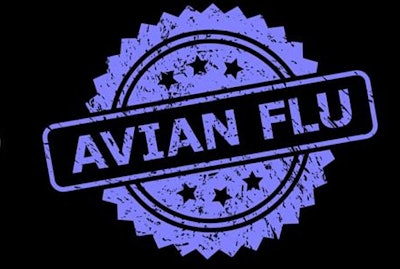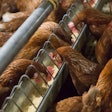
The highly pathogenic avian influenza (HPAI) outbreak is intensifying in South America, as the virus has now been confirmed in Bolivia and new cases are emerging in Ecuador.
Avian influenza in Bolivia
Bolivia is the latest South American country to have confirmed cases of HPAI, with the virus appearing in a commercial egg farm and a backyard flock.
On January 21, a suspected case was reported at a commercial egg farm in Sacaba. In this case, about 200 laying hens had died. There were 35,000 hens in the flock that were susceptible. The premises included eight poultry houses.
Meanwhile, on the same day, a suspected case at a farm where 202 backyard chickens, ducks and geese were being raised. 125 of those birds had died. That farm is in Quillacollo.
Samples from both farms were tested at national laboratories, with both cases coming back positive, according to a report from the World Organisation for Animal Health (WOAH).
The following control measures at both have been implemented: stamping out, official destruction of animal products, surveillance within and outside of restriction zones, disinfection of the facilities, quarantine, traceability, screening and movement control.
WOAH did not list a serotype associated with the virus in these cases.
New cases in Ecuador
The latest reports from the WOAH on the avian influenza situation in Ecuador show that the country has had multiple layer farms and backyard farms affected by HPAI since it was first confirmed at a commercial farm in Chaguana in November 2022.
Six cases of HPAI have been confirmed in commercial layer operations, three backyard flocks and two wild birds in the country. The serotype found in the commercial and backyard poultry was H5N1, but no serotype was offered for the cases involving wild birds.
The commercial flocks were located in Eloy Alfaro, Munango, Chantilin, La Florida, Chantilin Chico and San Buenaventura. In many of those flocks, a large number of birds died before the remainder of the flocks were depopulated.
Deaths and total susceptible hens in each flock are as follows:
- In Eloy Alfaro, 3,107 of 7,100 birds died.
- In Munango, 16,925 of 20,000 birds died.
- In Chantilin, 376,722 of 536,910 birds died.
- In La Florida, 1,372 of 9,315 birds died.
- In Chantilin Chico, 99,848 of 155,839 birds died.
- In San Buenaventura, 675 of 17,317 birds died.
The cases in backyard poultry were in Guanujo, Barrio Bellavista and San Francisco, where a total of 57 ducks, native hens and geese were affected. The wild birds included a black-headed gull in Anconcito and a blue-footed booby in Jambeli.
Read our ongoing coverage of the global avian influenza outbreak.



















